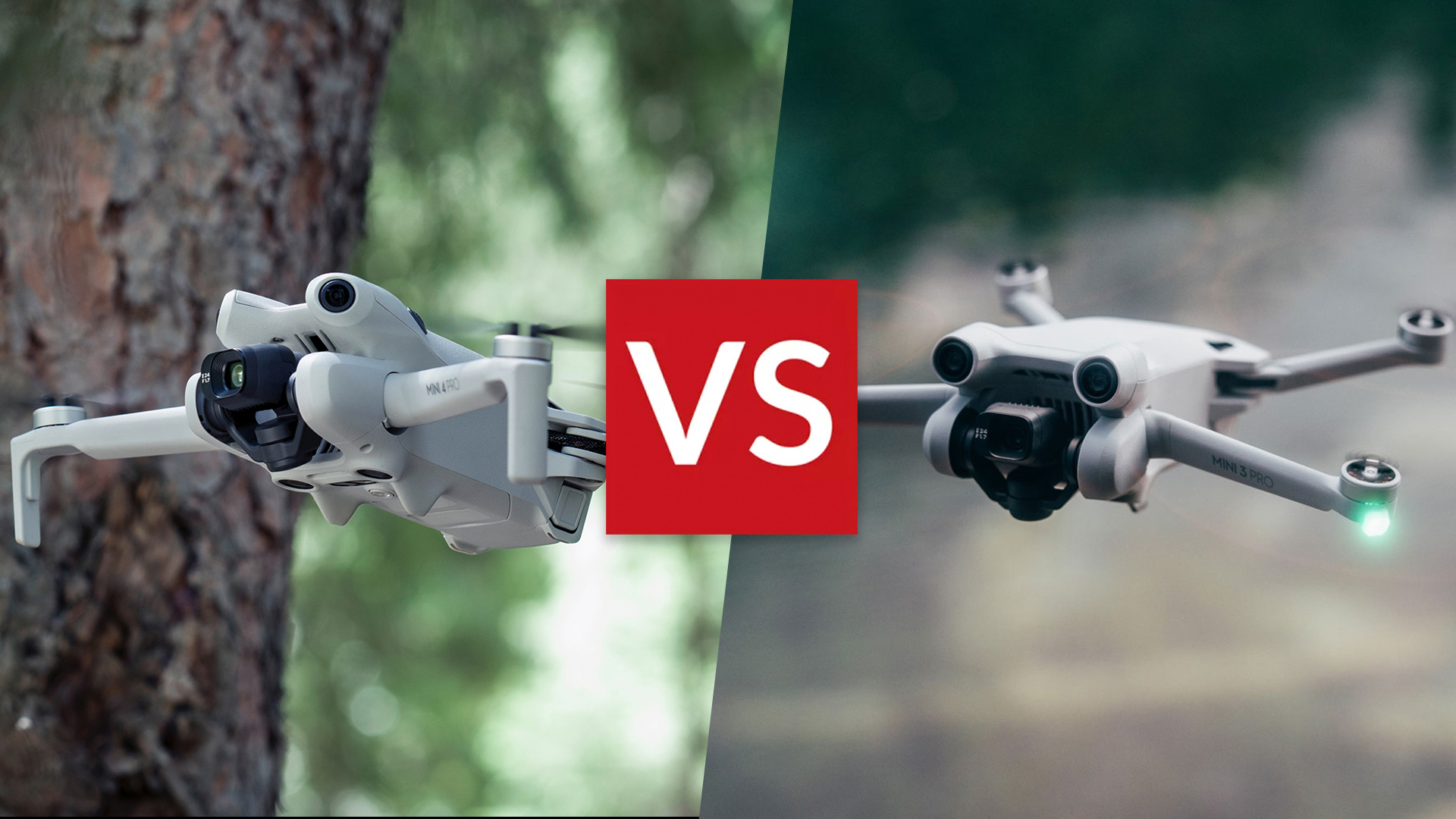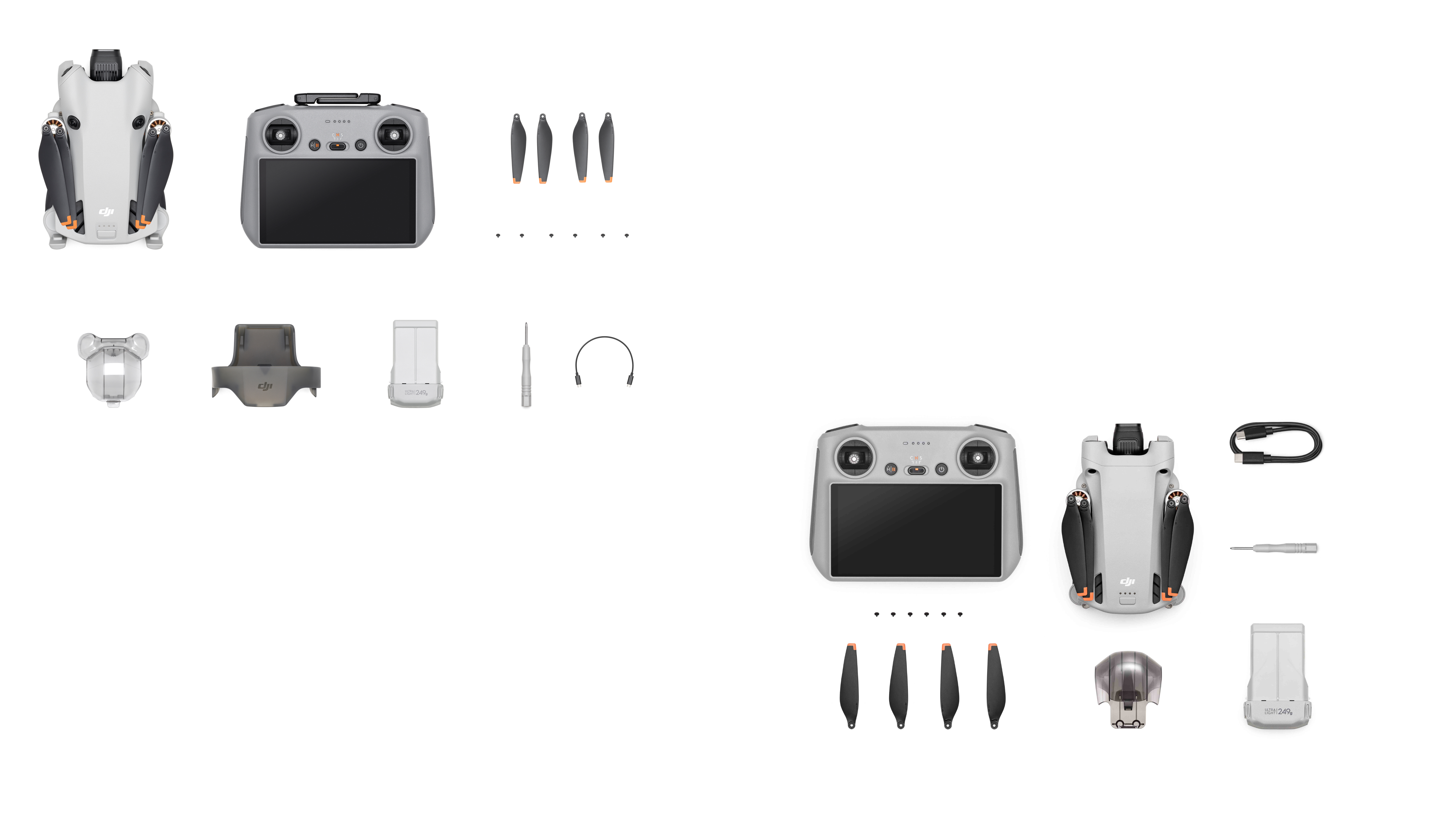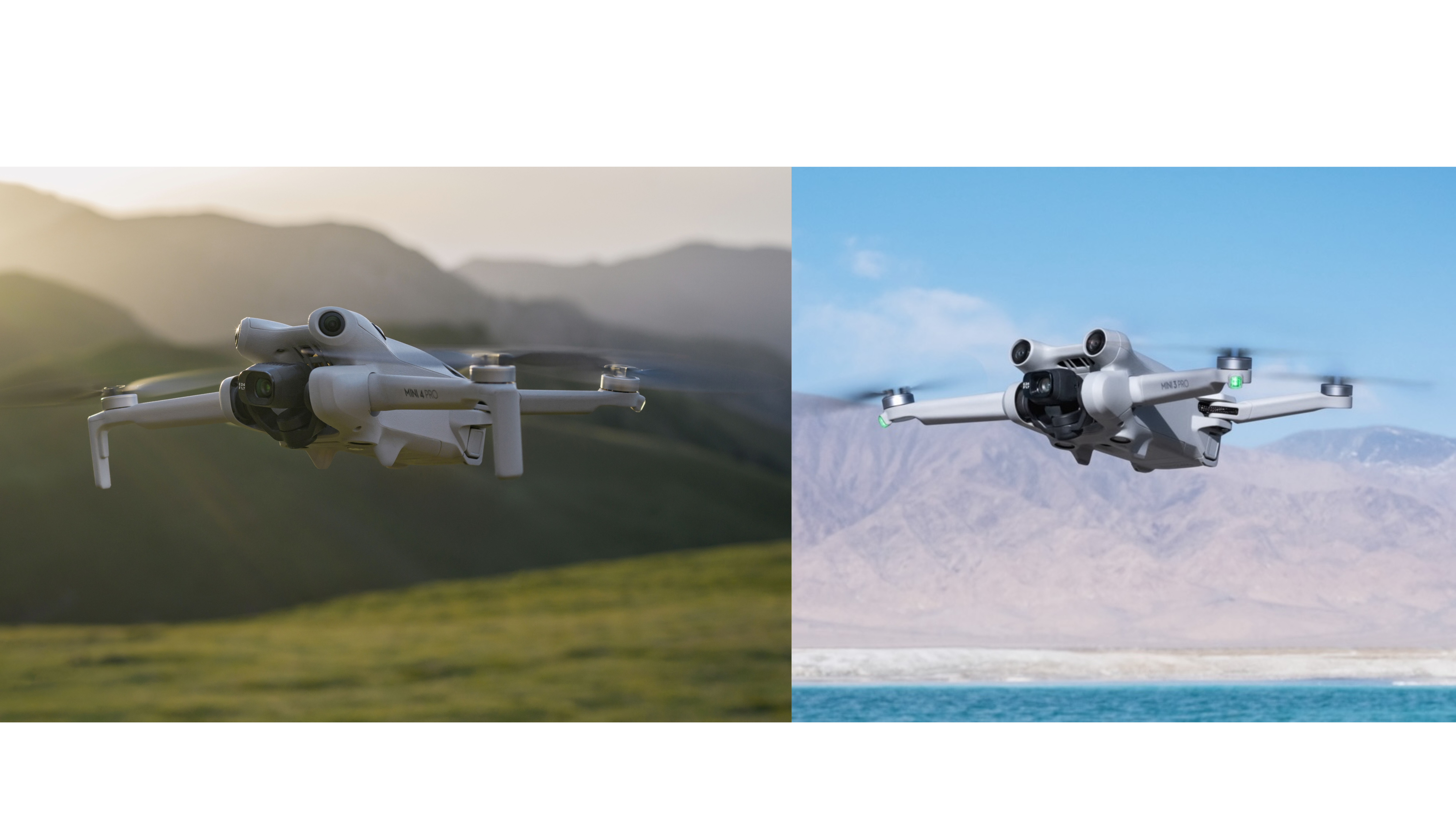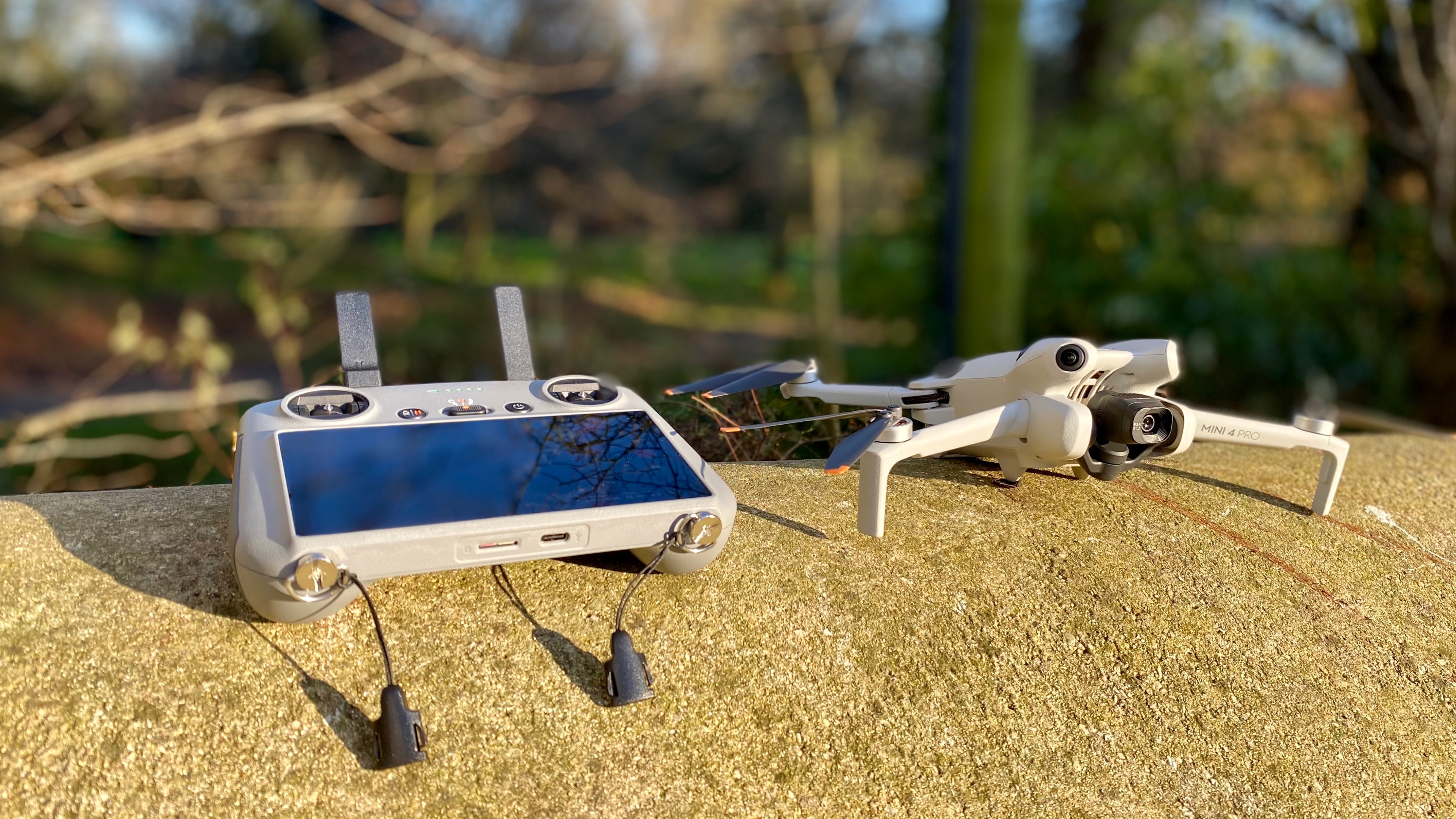
DJI’s Mini drone lineup has always been a top choice for creators seeking powerful performance in a lightweight package. But with the release of the DJI Mini 4 Pro, is it still worth considering the Mini 3 Pro, or should you invest in DJI’s latest drone tech for 2025? We break down the key differences to help you decide which drone truly deserves a spot in your gear bag this year.
The DJI Mini 3 Pro sets a high bar for compact drones with its 4K video, tri-directional obstacle sensing, and intelligent flight modes. It is a solid choice for hobbyists and semi-professionals looking to capture stunning aerial footage without a bulky setup. It strikes a perfect balance between performance and portability, allowing creators to easily take it on any adventure.
Meanwhile, the DJI Mini 4 Pro takes things further with upgraded sensors, an even more advanced obstacle avoidance system, and improved video capabilities, such as enhanced HDR recording and smoother footage. This drone is geared towards more demanding users who want cutting-edge features in a compact form. Its refined design and new capabilities make it perfect for drone enthusiasts and professionals who are always looking for the latest drone technology.
In this comparison, we examine the features, performance, and overall value of both models to help you determine which is the best drone for you, whether you're looking for an affordable powerhouse or the newest, most advanced option.
DJI Mini 4 Pro vs DJI Mini 3 Pro
Specifications
Price

When it comes to purchasing decisions, there is always one major overriding factor that often forces our hand into opting for an earlier model of whatever product it is we’re pursuing, and that’s the price. If you can’t afford to stretch your budget by even a few bucks, then that’s the argument over with. Period.
On the other hand, if you really can stretch the budget, in this instance, the DJI Mini 4 Pro might just be the better option for you, but first, let's look at the pricing of both models.
The Mini 3 Pro was launched in May 2022 and is available now at DJI in two main configurations – the DJI RCN1 version (£639/ $759/ AU$ 1,119), which comes with DJI’s standard phone-mount controller and the DJI RC, which ships with DJI’s RC all-in-one controller (£859/ $909/ AU$1,299).
For the record, the RC controller is a much better bet since it has its own 5.5-inch HD display and doesn’t require plugging in a phone which will bother you with things like email and WhatsApp notifications while you’re flying. The RC is also much quicker at getting the bird into the sky since it doesn't involve cables and phone cradles.
The Mini 4 Pro was launched in September 2023 and is also available now at DJI in two main configurations. There’s the DJI RC-N2 with a standard phone-based controller for £689/ $759 and the DJI RC 2 version with DJI’s uprated RC 2 controller for £869/ $959.
Look closely, and you’ll notice that the price of the earlier Mini 3 Pro with the screen-based RC controller is the same price as the Mini 4 Pro with the standard RC-N2 controller.
This is key, dude, because it essentially means you can buy the latest Mini 4 Pro for the same price as the Mini 3 Pro, albeit with a different controller. This would then allow you to save up some readies (£323 worth) for the Mini 4 Pro’s superb RC 2 controller and either sell the one that came with the drone (around £45 at today’s eBay prices) or hold onto it as a backup.
Think about it because, as you will see in the following breakdown, there are many reasons why – price notwithstanding – the Mini 4 Pro is ultimately the better drone, given the overall specs. Also, remember that, at some point in the not-too-distant future, DJI may stop providing firmware updates for the Mini 3 Pro.
I should add at this point that both models are also available as Fly More Combos. If you can afford it, a Fly More Combo is usually the best package to opt for since it includes three batteries (normally around £59 each), a 3-way charging hub and an excellent shoulder bag to contain it all. The DJI Mini 4 Pro Fly More Combo retails at £979, and the DJI Mini 3 Pro Fly More Combo at £728.
Fancy jumping on the DJI Mini bandwagon? The Mini 4 Pro is available from a number of outlets, including DJI, Argos, Very and Amazon, and the Mini 3 Pro is available directly from DJI, Amazon, Argos and Jessops.
Winner: The Mini 3 Pro is more affordable, making it a better choice for budget-conscious users.
Design

Both of these drones weigh exactly the same – 249 glorious grams. That means you can fly either drone without having to meet most of the legal requirements laid out in the CAA’s current raft of drone regulations.
Although they both look the same size, the Mini 4 Pro is marginally larger than the Mini 3 Pro. When folded, the Mini 4 Pro measures 148×94×64mm and the Mini 3 Pro at 145×90×62mm. Unfolded, the Mini 4 Pro comes in at 298×373×101 mm and the Mini 3 Pro at 251×362×70mm.
It’s an amazing feat on DJI’s part that, aside from all the other new bits you will soon read about, the Chinese drone behemoth has managed to add more plastic into the Mini 4 Pro’s build without exceeding the magic 249g weight limit.
If you look closely, the most immediate difference between the two fuselages is that the Mini 4 Pro has two bulging frog eyes and a beefier midriff. There are also a few extra sensors on board but more on that below.
Winner: The Mini 4 Pro features a refined design with enhanced aerodynamics and improved build quality, offering a more polished appearance.
Flight characteristics
Irrespective of which type of controller is used, both of these drones fly in exactly the same way, and both are butter smooth when following your control stick inputs. They are also extremely quiet in flight which is an important consideration if you don’t want to attract attention to yourself.
If you’ve never flown a drone before, you will find that both of these models are an unbridled joy to fly. Like driving an automatic car, all inputs are so beautifully dialled that when you gently push the forward-direction stick, the drone responds in kind.
Likewise, a fast shift forward will see the drone pitch at an acute angle as it rockets off into the distance. DJI reliability is so rock solid that these days, any mishaps are likely to be down to pilot error, so always watch your drone like a hawk and not just the display monitor in your hands.
Moreover, both models also allow you to personalise a myriad of flight options like the drones’ angular velocity, yaw and pitch smoothness, braking effectiveness and even the camera gimbal’s tilt speed and overall smoothness. Other similarities include flight duration – both an ample 34 minutes per battery – and maximum speed – both a commendable 35.79mph.
Winner: With upgraded flight stability and responsiveness, the Mini 4 Pro provides a superior flying experience, especially in challenging conditions.
Obstacle sensing
Aside from the small differences in size, obstacle sensing is the first major variation between the two drones. Where the DJI Mini 3 Pro has forward, backward and downward obstacle sensing, the Mini 4 Pro features an omnidirectional binocular vision system that covers all sides of the drone. This is not a reason in itself to immediately opt for the Mini 4 Pro since obstacle sensing isn’t the most valuable facet of a drone though it certainly is very useful, especially if you’re a beginner.
I personally have never had the need for obstacle sensing because I don’t fly in tight spaces or have the drone follow me between an avenue of trees while I ride my bike. If you want a drone that will follow you in a number of scenarios, then clearly the all-seeing Mini 4 Pro is inarguably the model to go for.
Winner: Equipped with an omnidirectional binocular vision system, the Mini 4 Pro offers comprehensive obstacle detection, enhancing flight safety.
Camera performance

Hardware-wise, the Mini 4 Pro and Mini 3 Pro’s cameras are equipped with the same 1/1.3-inch CMOS sensors, and both lenses have a maximum aperture of f/1.7 and an ISO range of 100-6400, which can be considered very good indeed, especially for low light shooting.
However, only the Mini 4 Pro has Night Shots video functionality, and this feature alone is a key improvement because it allows the Mini 4 Pro to shoot stunning scenes with excellent dynamic range in very low light.
Video resolution is another area in which the Mini 4 Pro just pips the Mini 3 Pro. Yes, they both shoot in 4K at 24, 25, 30, 48, 50 and 60 frames per second, but only the Mini 4 Pro can shoot at up to 100fps in 4K.
Likewise, in HD 1080 mode, the Mini 3 Pro’s max frame rate stops at 60fps while the Mini 4 Pro goes further to 100 and 200fps. These are all fundamental improvements when it comes to shooting video. In terms of photography, both are capable of shooting 12 MP and 48 MP stills in both JPEG and RAW.
Another area where the Mini 4 Pro most certainly trounces the Mini 3 Pro is its ability to shoot in a wider variety of colour modes. Where the Mini 3 Pro has just Normal and D-Cinelike, the Mini 4 Pro features Normal, HLG and D-Log M in 10-bit decoding for more effective colour grading in post-production. D-Log M is a no-brainer if you always edit your footage using Final Cut Pro or Adobe Premiere Pro.
Finally, both models provide the wherewithal to zoom in digitally though this is mostly used for scouting a scene in the distance before flying there. The Mini 4 Pro has a 1-3x zoom, while the Mini 3 Pro has a maximum of 2x zoom.
Winner: The Mini 4 Pro boasts improved video capabilities, including 4K at 100fps and enhanced HDR recording, resulting in higher-quality footage.
Pilot interface

For the sake of this comparison, we shall compare the Mini 4 Pro’s RC 2 controller to the Mini 3 Pro’s RC controller since they are, in my opinion, a better choice than the standard phone-mount variants. Take note that these controllers are not cross-compatible.
Both of these controllers are equipped with 5.5-inch FHD displays, and they both have rear-mounted buttons for instant access to a variety of pre-programmed in-flight functions.
The Mini 4 Pro uses DJI’s latest OcuSync 04 with a transmission distance of six miles, while the Mini 3 Pro uses OcuSync 03 and has a transmission distance of five miles. Both are rock-steady transmission systems that rarely lose signal unless you’re flying behind a large obstruction.
Live view quality on both displays is exceptional, and they can both be used in bright sunlight. However, the Mini 4 Pro’s 1080p transmission frame rate is at 60fps while the Mini 3 Pro’s is at a slower 30fps. Nevertheless, this difference isn’t really a deal breaker, given the other improvements of the Mini 4 Pro over the Mini 3 Pro.
Winner: Featuring the new DJI RC-N2 controller, the Mini 4 Pro offers a more intuitive and responsive pilot interface, improving user experience.
Inflight features

Both of these drones support the full gamut of DJI’s amazing Quick Shots armoury. These modes allow the user to create a series of complex cinematic camera shots automatically without having any fingers on the joysticks.
For the record, they are: Dronie (the aircraft zooms out backwards and upwards); Rocket (the aircraft goes straight up with the camera pointing down); Circle (the craft performs a perfect circle with the camera pointing at the subject); Helix (a spiralling effect); Boomerang (the craft flies around the subject in an oval path while ascending); and Asteroid, which sees the craft create a series of aerial images that are stitched together to form a planet-shaped image.
Both models also feature active tracking, which means the aircraft will follow the user or any other moving object in a variety of preset flight paths. However, only the Mini 4 Pro has 360˚ tracking capability, which uses a superb touch trace interface to autonomously capture subjects from a wide variety of amazing angles. And if you like the idea of creating recorded flight paths, you can do that too with both of these drones by using the waypoints function.
Finally, the Mini 4 Pro also has a brilliant facility called Cruise Control. To use Cruise Control, you simply start a manual flight path and tap one of the pre-programmed function buttons underneath the RC 2 controller. Now release the sticks, and the drone will continue on the same flight path and at the same speed so you can concentrate on using the camera’s gimbal to get that money shot.
The main reason why there are more autonomous modes on the DJI Mini 4 Pro than the Mini 3 Pro is that they’re tied to the Mini 4 Pro’s better obstacle avoidance. Hence, if full flight autonomy is your bag, then the Mini 4 Pro is definitely the way to go.
Winner: With advanced intelligent flight modes and enhanced tracking capabilities, the Mini 4 Pro provides more creative options for pilots.
Verdict
This writer has learned a lot during the extra research on these two drones, and my overriding opinion is that the DJI Mini 4 Pro is far and away the better drone in everything, except for general flight characteristics, which are essentially the same.
The Mini 4 Pro has better obstacle avoidance, more autonomous flight modes and a slightly better hand controller. And while the camera itself is much the same, the software running it produces better images in very low light conditions.
However, there’s no denying that, for many users, the DJI Mini 3 Pro will be more than enough for their needs. And it’s a lot cheaper, too.







